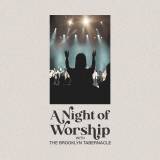Playing Bass in Worship

Playing the Bass in a worship band can seem easy to the uninitiated, but tastefully playing bass in worship can be one of the most challenging roles in a modern worship band. Gary Lunn describes the bass’ role: “The key word is sensitivity. Bass players have one of the greatest responsibilities in the worship team—holding everything together. In my humble opinion, we supply a steady, firm foundation, as a fully functional flowing part of a musical collective that draws people closer to God” Because the bass is a foundational part of the band, the bass player has a huge responsibility. In modern worship, reliance on the bass has grown. Many modern songs not only rely on the bass to help solidify the grove of the song, but the bass is also being called upon to provide the signature sound of the song as in 2nd verse of the song No Reason to Hide by Hillsong.
Here are a few Tips and
Techniques to help the Bass become the glue of the band
Drum and Bass Team
The most important
technical concept for a good bass player to learn is how to sync with the
drummer. A Bass and Drum team working in unity creates a solid foundation that
the rest of the band can play on. A Drum Bass combo that is not working
together creates disruption and confusion that trickles down to the rest of the
band. It is important for the bass parts to support the kick drum and melody as
does the part written by Matt Tenni of Hillsong for the song Break Free.
It is important for a
drummer and bass player to decide on the kick pattern of the song’s parts and
then execute those parts consistency. As a general rule the bass should play
within the structure of the kick pattern and accent with the drums snare.
Greg Scheer says it best
“The bass guitar and kick drum occupy the same low range, so they need to
reinforce each other rather than fight each other’s rhythms. This doesn’t mean
they need to play exactly the same rhythm, but their fundamental rhythms should
be the same. If they both play their own rhythms, it will result in “popcorn.”
Leader not follower
With all the talk of the
bass being a foundational and supportive instrument it is easy for a bass
player to sit back in the mix and follow the rest of the band. However, this is
the exact opposite of what a good bass player should do, and doing so
compromises the foundation of band’s grove. It’s easy for a bass player to just
play along with the music, but you (along with the drums) should be the tip of
the spear and allow the other instruments to play along with you. There are
times to pull back and follow, but the majority of the time, the band relies on
the bass to generate the fundamental chord structure and ryhtm of the song. I
hear a lot of worship bands who seem to be dragged along by the worship
leader’s acoustic guitar or piano, and it leaves the band feeling cluttered,
loose, and frail. A good bass player must play with confidence and an intent to
lead. This can be a hard concept: follow the leader but yet lead him. This is
why it is important to be engaged during worship, and look for the leader’s
signals and body language. I will usually pull back just a bit when we near a
part where the leader could change things, and then once I am certain of the
direction, I will begin to play with authority. (Note: this does not mean
playing loud; it just means playing with confidence)
A practical way of ending
the bad habit of following is practicing with a metronome and nothing else,
instead of playing along with a recording. This forces you to practice the
chord progressions with authority instead of following a recording. Using a
metronome is extremely important. Playing with a metronome will reinforce your
tempo abilities, and can reveal inadequacies in your rhythm. The metronome does
not lie.
Simplicity
Because the bass is a
very simple instrument, it can be very tempting to over play. This is why the
bass is one of the easiest instruments to learn but one of the hardest to truly
master. I was told that I should learn to play bass like I had to pay a dollar
for every note. The message behind this is to: make your notes count. Good bass
playing does not come with the amount of technical prowess shown or the amount
of notes played, but in efficiency. Learning to create less is a very hard
skill to master. Try creating bass lines with the purpose of creating a certain
dynamic and then figure out the most efficient way of playing it.
Usually no one will
consciously notice a bass player’s parts, but they will be able to feel the
effect of a skilled bass player who plays simply with subtle dynamics. Less is
more. Remember that when you do a run or riff you are usually taking away from
the structural bass notes that the worship team is depending. Only use these
advanced techniques when they have the opportunity to support the drum and
vocal lines and do not take away from the foundation of the song. I would
rather have a bass player who simply plays the notes, but is consistently in
time and on point, than a virtuoso who does not know how to blend.
Don Potter, says ” a
professional musician is defined as one who always plays beneath his ability so
that he is always in control.” These are wise words of counsel we would do well
to follow.
Chord Progression Variation
A practical
way of creating dynamic parts is using chord progression variation. The means
that is the chord progression is G-C-Em-D you could play the G low the C low
the E high and The D low and the next time change it up to add emphasis.
Remember to be purposeful. Play around with different note patterns in a song
and try to feel the dynamic effect it creates. In general I will start the song
pretty basic and use climbing progressions to build and will drop to lower
notes for emphasis. Try not to be a bland bass player who plays the
progressions the same way every single time. To be a great bass player you must
have balance between simplicity and flair. This is why the bass is so
challenging.
If you need ideas read
Matt Tenni’s blog about writng bass parts for the bass- here
Chop off the pianist’s left hand
While hopefully you don’t
have to go this far, it is important for a bass player to communicate with his
band members about the tonal space he/she will be filling. If you will be
playing with a piano player, they should feel comfortable letting the bass and
kick occupy the low frequencies or at a minimum promise to not clutter it up.
It is very hard for the bass, kick drum, and keyboard to occupy the same tonal
range without cluttering it up and creating the “popcorn” feeling. If you have
a keyboard player who clutters up the low end, ask him to try out just playing
with his right hand. If that fails, hack away. But remember, if a bass player
is playing tentatively, the piano player will naturally have pick up the slack,
especially if the worship leader is leading from piano.
CONTINUED ON PAGE 2>>>
Playing Bass in Worship
 Reviewed by Admin
on
10:00:00 AM
Rating:
Reviewed by Admin
on
10:00:00 AM
Rating:
 Reviewed by Admin
on
10:00:00 AM
Rating:
Reviewed by Admin
on
10:00:00 AM
Rating:
















Post a Comment